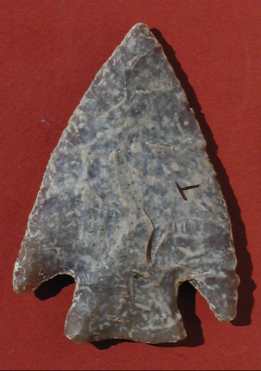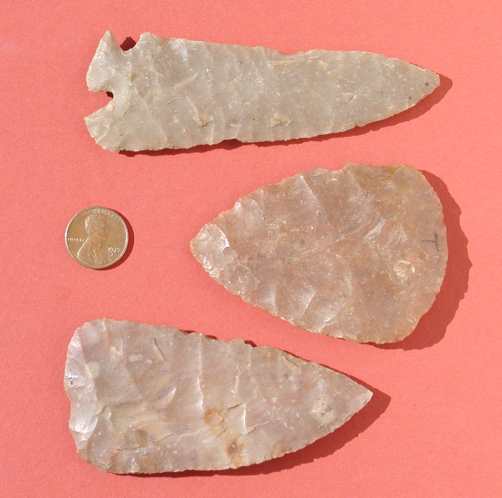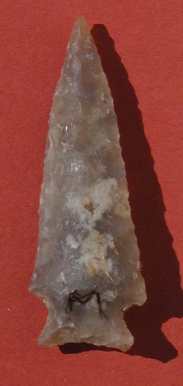The Concho Indians are really more of a Mexican tribe than a Texas tribe. They lived along the Rio Concho River in Northern Mexico. The Concho River joins the Rio Grande River in the Big Bend region of the Rio Grande River. Of course you know the Rio Grande River is the border between Texas and Mexico. The Big Bend region of the Rio Grande is in far west Texas. Today this part of Texas and Mexico is a semi-desert. If you go very far from away from the rivers the land is very arid desert. That means it doesn't get much rain and it is very hot in the summer.
The Concho Indians were divided into a number of bands or groups. While researching this page, I counted 29 names, possibly the names of Concho bands, associated with this tribe in Old Mexico. These other bands of the Concho Indians lived in the Rio Concho River valley going south down into old Mexico. The Concho river goes a long way south into Mexico. The Concho River is right between the Chihuahua region and the Coahuila region of northern Mexico.
One band of the Conchos was called the Chizos. The Chizos Indians lived near the mouth of the Concho River where it joins the Rio Grande near the Big Bend region. The Chizos probably lived a short distance up and down the Rio Grande River near where the Concho River joined it. The Chizos Mountains of west Texas are named after the Chizos Indians. The Chizos are probably the only band of the Concho Indians who lived in Texas. Copyright by R E. Moore and Texarch Associates, all rights reserved.
The Conchos lived next the Jumano Indians - just south of them. Most of the early accounts describe the Concho and Jumano as being friends and being very similar in appearance and culture. During the Spanish Colonial period the Jumano and the Concho Indians joined together several times to revolt against the Spanish. They did this because the Spanish were coming into their territory and capturing them as slaves. They would make these slaves work in Spanish mines. Working in the mines as a slave was very hard and dangerous work.
This slave raiding by the Spanish seems to have helped destroy the Conchos. Their numbers got smaller and smaller. The diseases the Europeans brought also hurt them. Many of them died from disease. When their numbers got very small, some sources say they joined the Jumano and became Jumanos. This was sometime in the early 1700s.
Some authorities say they spoke a Uto-Aztecan language. Other sources say we cannot know what language they spoke. We do know other tribes in their region spoke Uto Aztectan.
FOOD
Some sources describe them as hunter - gatherers. This means they hunted
animals and gathered wild plants for food. Other sources say they farmed
along the Concho river. I think they did both. The bands who lived near
the river would farm because this is the easiest way to get food. The Indians
who lived on all sides of them farmed. This means they had sources for
seeds and the knowledge of how to farm. I also think they hunted and gathered.
This is an arid region and growing crops, even along the river, is risky
and does not produce abundant crops. The men would have hunted to get meat
and the women and children would have gathered plant foods. Bands who lived
away from the river would have had to hunt and gather. Also in the winter
and spring before the farm crops are grown and harvested they would have
hunted and gathered to get food.
They probably farmed corn, beans and squash like the Indian tribes all around them. In the spring they would plant their crops on a terrace of land next to the river or near a spring. They would make holes in the ground using digging sticks. A digging stick is a long stick with a pointed end. They did not have plows or animals to pull plows. This means they did not plant their crops in neat rows like we are used to seeing. A field of Indians corn would have plants growing scattered all over the place.
The men hunted all kinds of animals with bows and arrows. They hunted rabbits, deer, birds, and anything else they could find. They also used traps and pits and snares to catch small animals. They fished in the Concho river and gathered clams to eat. They made nets to fish with.
One special food source they had was the cactus that grew in their region. Many kinds of cactus can be eaten. The fruit of cactus are called tunas, no not the fish. (I do not know why so do not e-mail me and ask how they got this name.) Tunas -cactus fruit -- are sweet and good to eat. They are a lot like figs with lots of very small crunchy seeds in a sweet gooey pulp. If you have ever eaten a Fig Newton you know what I am talking about - they inside stuff in the Fig Newton. To eat a tuna you first get the thorns off of it by rolling it in a fire or in sand. Then you can eat them raw or cook them. I have eaten cactus tunas and they are very good.
Copyright by R E. Moore and Texarch Associates, all rights reserved.
The women and children would go out and gather all kinds of nuts, berries, roots and anything else that was good to eat. They were experts on all of the edible plants that grew in their region. They also knew which plants that they could use as medicines.
CLOTHING
They wore very little clothing. They wore breach cloths in the summer and
used capes made of rabbit fur to keep warm in the winter. They made sandals
out of plant fibers for their feet. They may have grown cotton and woven
cotton cloth. They often tattooed and painted themselves all over their
bodies. Sometimes they wore feather head dresses.
HOUSES
They lived in huts. There are not any good descriptions of these huts.
They seem to have been a wooden framework covered with skins or grass.
Inside they had mats woven out of grasses. Because they probably moved
around a lot these houses were not very substantial. Why bother to build
a strong house when you are going to move out of it pretty soon?
That's about all I could find out about the Conchos. I know it doesn't answer all the questions you might have about them. Even the experts have many simple questions they have no answers for.
| |
Copyright by R E. Moore and Texarch
Associates, all rights reserved. Graphics may not be used or reproduced
without prior permission. Short parts of text may be quoted in school reports.
Longer quotes require prior written permission.


